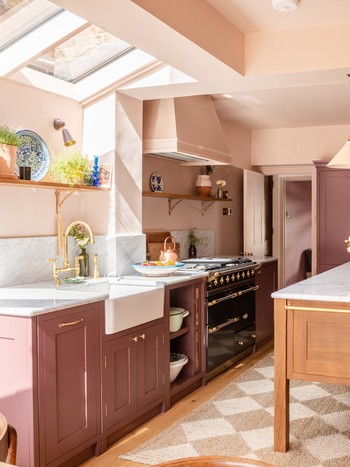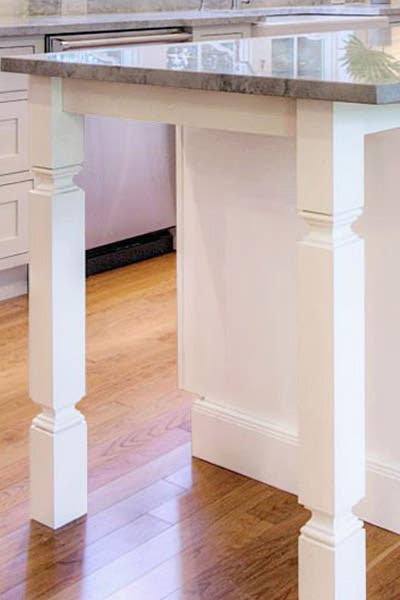Crucial Variables to Take Into Consideration When Picking Legs For Kitchen Island
Choosing the appropriate legs for a cooking area island entails a cautious assessment of numerous elements that can substantially affect both performance and visual allure. Amongst these, the selection of material plays an essential role in making sure toughness, while the layout has to match the existing decoration. In addition, considerations such as height and weight support are crucial for stability and convenience. As we discover these aspects, it ends up being clear that each choice can have far-reaching effects for the general kitchen area experience. What subtleties should be taken into consideration in each of these categories to attain the optimal balance?
Product Options
When selecting legs for a cooking area island, recognizing the different material choices is crucial for achieving both aesthetic allure and architectural honesty (Legs For Kitchen Island). The option of material significantly affects not just the longevity of the island yet also its total layout and functionality
Metal legs, commonly made from stainless steel or wrought iron, contribute a modern and commercial feel while guaranteeing durability and security. These products are resistant to put on and can sustain considerable weight, making them ideal for larger islands.
Another option is crafted products, like MDF or plywood, which can be a lot more cost-effective while still offering a series of coatings. Nonetheless, they might not supply the same level of stability as solid wood or metal. Products such as acrylic or glass can create a modern appearance, though they might call for added support to guarantee security.
Inevitably, the choice of material for cooking area island legs need to straighten with the wanted performance and the general theme of the cooking area.
Design and Design

When considering style, the form and finish of the legs are important. Conical legs can offer a sense of lightness and elegance, while thicker, much more robust legs can communicate strength and security. Furthermore, the coating-- be it painted, tarnished, or natural-- ought to enhance the kitchen cabinetry and countertop materials to create a unified look.
Moreover, the design of the legs can likewise reflect personal taste. Custom-made or ornamental legs, such as those including detailed carvings or one-of-a-kind geometric shapes, can serve as prime focus, including personality and individuality to the cooking area. Eventually, the right option will certainly not only improve functionality however additionally boost the visual allure, making the cooking area island a standout feature of the home.
Elevation Considerations
Picking the suitable height for kitchen island legs is essential, as it straight influences both functionality and comfort. The standard height for a cooking area island generally ranges from 36 to 42 look at this web-site inches, aligning with usual counter top elevations.

It is likewise vital to make up individuals' elevations and choices. Tailoring the elevation can guarantee a comfy experience for all household members, making the kitchen island a much more functional and pleasurable room.
Weight Assistance
Making certain adequate weight support for kitchen area island legs is essential for both security and performance. The kitchen area island frequently serves multiple objectives, including food preparation, dining, and added storage space, necessitating a durable support structure. When selecting legs, it is critical to consider the total weight ability needed based upon the island's intended usage and the materials that will be positioned on it.
The selection of product for the legs plays a considerable role in their weight-bearing capacities. Solid wood, metal, and heavy-duty compounds typically supply exceptional stamina compared to lighter products. Furthermore, the style of the legs-- whether they are important site straight, tapered, or have a pedestal type-- can influence their capability to distribute weight properly throughout the framework.
Additionally, the leg placement ought to be purposefully intended to enhance security. Legs positioned at the corners or with a larger base can better sustain larger loads. Constantly speak with the producer's specs relating to load limits to make sure that the legs can maintain the intended weight without endangering security. In summary, choosing kitchen island legs with sufficient weight support is crucial for producing a practical and secure cooking space.
Installment and Maintenance
Proper setup and maintenance of cooking area island legs are important for making sure durability and security. To start, it is important to follow the supplier's standards throughout installation. This often includes securing the legs to the space station using appropriate bolts, ensuring that the legs are level and aligned. Using a level device can help stop wobbling and enhance the overall visual charm of the cooking area island.
As soon as click to read more mounted, normal upkeep is needed to preserve the honesty and appearance of the legs - Legs For Kitchen Island. For wood legs, routine cleaning with a damp fabric and application of ideal wood polish can protect against wetness damage and keep their surface. Steel legs might require a gentle cleaning remedy to get rid of oil and gunk, followed by a completely dry towel to stop corrosion formation
Additionally, check the legs regularly for indications of wear or damages, such as cracks or loose joints. Tightening up screws or screws as needed can additionally lengthen the lifespan of the legs. By adhering to these setup and upkeep techniques, home owners can guarantee that their kitchen island continues to be strong and aesthetically appealing for several years ahead.
Verdict

Visual coherence is vital in selecting the style and design of legs for a kitchen island, as these components greatly affect the general ambiance of the area. Tapered legs can offer a sense of agility and elegance, while thicker, extra robust legs can convey strength and stability.Picking the appropriate elevation for kitchen island legs is vital, as it directly influences both functionality and comfort. In summary, choosing kitchen island legs with ample weight assistance is essential for developing a practical and secure culinary space.
In conclusion, choosing legs for a cooking area island requires mindful factor to consider of various factors, consisting of product options, style, elevation, weight support, and installment.